 W
WOtto Arndt was an East German politician who served as Minister of Transport and General Director of the Deutsche Reichsbahn from 1970 until 1989.
 W
WEduard Florus Harald Auffarth Royal House Order of Hohenzollern, Iron Cross, Silver Wound Badge, Hanseatic Cross, was a World War I German fighter ace credited with 29 victories. After the war, he ran an aviation training school that covertly supported establishment of the Luftwaffe.
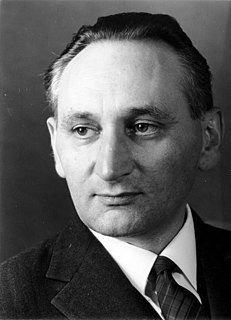 W
WEgon Karl-Heinz Bahr was a German SPD politician.
 W
WFriedrich Bassler was a German hydraulic engineer.
 W
WGeorg Ludwig Heinrich Nicolaus von Below was an officer in the German Luftwaffe and an adjutant to Adolf Hitler.
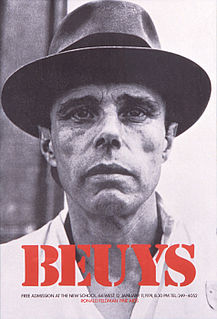 W
WJoseph Heinrich Beuys was a German artist, teacher, and theorist of art who was highly influential in international contemporary art in the latter half of the 20th century. He is a founder of the art movement known as Fluxus, and a practitioner and exemplar of happenings, and performance art. He adopted media and techniques including paint, sculpture, graphic art, and installation.
 W
WFeldwebel Eugen Bönsch was a World War I flying ace credited with 16 aerial victories.
 W
WKarl Carstens was a German politician. He served as President of the Federal Republic of Germany from 1979 to 1984.
 W
WPeter Flinsch was a German Canadian artist, who worked as a set designer and art director for television programming produced by Radio-Canada the French language service of the Canadian Broadcasting Corporation.
 W
WWalter Frentz was a German cameraman, film producer and photographer, who was considerably involved in the picture propaganda of Nazi Germany.
 W
WErnst Gadermann was a German physician in the Wehrmacht of Nazi Germany during World War II. He was a recipient of the Knight's Cross of the Iron Cross. After World War II he became a well known cardiologist.
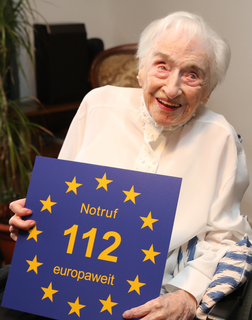 W
WGerman supercentenarians are citizens, residents or emigrants from Germany who have attained or surpassed 110 years of age. As of January 2015, the Gerontology Research Group (GRG) had validated the longevity claims of 59 German supercentenarians, being 49 residents and 10 emigrants. There are currently at least 6 Germans known to be alive over age 110. The oldest of them is Josefine Ollmann, born 11 November 1908, aged 112 years, 286 days and living in Schleswig-Holstein. Augusta Holtz, an emigrant to the United States, remains the oldest German citizen whose age has been validated: she lived 115 years and 79 days, from 1871 to 1986.
 W
WHerbert Gollnow was a German resistance fighter, consulate secretary and later second lieutenant in the Luftwaffe. Gollnow career was influenced by Harro Schulze-Boysen while Gollnow studied at the Faculty for Foreign Studies of the Friedrich Wilhelm University in Berlin, and as rose through the ranks of the Luftwaffe, he became a counter-intelligence officer in the Luftwaffe and an informer to Schulze-Boyen. Gollnow became a member of a Berlin anti-fascist resistance group that was associated with Schulze-Boysen, that was later called the Red Orchestra. He was later arrested and executed in 1943.
 W
WIng Friedrich (Fritz) Görnnert was Ministerial Counsellor to Hermann Göring from January 1937 until the capture of Göring in 1945. He had previously been assistant to Professor Töpfer, who held the chair of aircraft construction at Karlsruhe University.
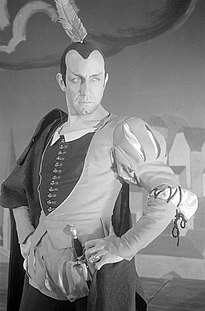 W
WOtto Eduard Hasse was a German film actor and director.
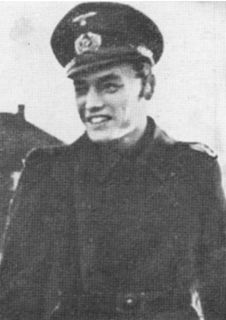 W
WHorst Heilmann was a German resistance fighter who was a member of the anti-fascist resistance group that formed around Harro Schulze-Boysen. This group and many others were bundled together and later called the Red Orchestra by the Abwehr. Heilmann was also a student and a wireless operator who worked at the Referat 12 that was in the Inspectorate 7/VI.
 W
WWerner Wolfgang Heubeck was a German–British transport executive, who was managing director of the Northern Ireland transport companies Ulsterbus and Citybus.
 W
WCaesar von Hofacker was a German Luftwaffe Lieutenant Colonel and member of the 20 July plot against Adolf Hitler.
 W
WKurt von Holleben was a German chemist working for Agfa-Gevaert Technical-Scientific Laboratory as the head of the colour screen research group, overseeing development of Additive color screens (kornraster) for the Agfa-Farbenplatte glass plates (1916), and film based Agfacolor (1932) and Agfacolor Ultra (1934) ranges.
 W
WErnst Pascual Jordan was a German theoretical and mathematical physicist who made significant contributions to quantum mechanics and quantum field theory. He contributed much to the mathematical form of matrix mechanics, and developed canonical anticommutation relations for fermions. Jordan algebra is employed for and is still used in studying the mathematical and conceptual foundations of quantum theory, and has found other mathematical applications.
 W
WWalter Kämpf was an Austrian anti-Nazi activist. He became a resistance member when he was still at school in Vienna. Following his conscription in 1939 he was also a soldier. He was subsequently suspected of "spying" and convicted by a military court. His death sentence was carried out using the guillotine that had been installed at the Vienna Regional Court complex, soon after the incorporation of Austria into an expanding German state.
 W
WErich Kästner was the last documented World War I veteran who fought for the German Empire and the last who was born in Germany. Consequently he was the last Central Powers combatant of the Western Front. He was also the second oldest man in Germany. However, he was not the last veteran living in Germany. Franz Künstler was an ethnic German who was born in and fought for the Austro-Hungarian Empire, migrating to Germany in 1946 and subsequently becoming a German citizen.
 W
WWilhelm Knabe was a German ecologist, pacifist, civil servant and politician, remembered as a founding member of the Green Party in Germany, and a pioneer of conservation of the environment who shaped the party for decades.
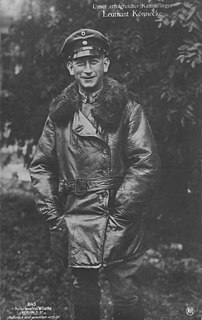 W
WLeutnant Otto Könnecke PLM, MMC, HoH, IC, was a leading German ace of World War I with 35 victories. He was one of only five pilots to receive Germany's highest decorations for both enlisted pilot and officer. He later became one of the founding pilots of Deutsche Luft Hansa and assisted in development of the new Luftwaffe.
 W
WKarl-Heinz Köpcke was a German television presenter and newsreader.
 W
WPaul Körner was a German Nazi functionary who served as State Secretary of both the Prussian State Ministry and the Four Year Plan. A close associate of Hermann Göring, he was also an SS-Obergruppenführer and was convicted as a war criminal by the Nuremberg Military Tribunal.
 W
WGeorg Leber was a German Trades Union leader and a politician in the Social Democratic Party of Germany (SPD).
 W
WFriedrich-Wilhelm Franz Max Erdmann Gustav von Lindeiner genannt von Wildau was a German Staff Officer of the Luftwaffe during World War II. He is best known today for having been the commandant of Stalag Luft III, which is famous for the 'great escape' which took place in 1944.
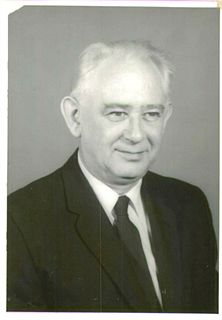 W
WRichard Lindenberg was a physician and pathologist, a Luftwaffe Captain during World War II, later Chief Neuropathologist of the State of Maryland. He testified before the Rockefeller Commission on the death of President John F. Kennedy.
 W
WRolf Manke was the commander of German submarine U-358 which was responsible for the sinking of four Allied ships and one neutral ship.
 W
WEmil Maurice was an early member of the National Socialist German Workers' Party and a founding member of the Schutzstaffel (SS). He was Hitler's first personal chauffeur, and was one of the few persons of mixed Jewish and ethnic German ancestry to serve in the SS, being declared an honorary Aryan by Adolf Hitler in 1935.
 W
WReinhard Mohn was a German billionaire businessman and philanthropist. Under his leadership, Bertelsmann, once a medium-sized printing and publishing house, established in 1835, developed into a global media conglomerate. In 1977, he founded the non-profit Bertelsmann Stiftung, which is today one of the largest operating foundations in Germany, with worldwide reach.
 W
WHans Guido Mutke was a fighter pilot for the German Luftwaffe during World War II. He was born in Neisse, Upper Silesia.
Rüdiger Proske was a prolific German author on politics and current affairs, a television journalist and a social democratic trades unionist. In 1961 he was a co-founder of the NDR current affairs programme Panorama.
 W
WKarl Maria Alois Rawer was a German specialist in radio wave propagation and the ionosphere. He developed the analytical code to determine suitable frequency ranges for short wave communication by which German forces built-up their long distance communications during World War II.
 W
WWolfgang Reinhold was a German Colonel General. He was a Deputy Minister of Defence and, between 1972 and 1989, head of the Kommando LSK/LV of the National People's Army in the German Democratic Republic.
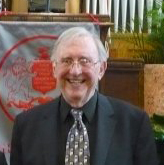 W
WHarald Ernst Hermann Rohlig was a German musician.
 W
WFriedrich "Fritz" Rumpelhardt was a German air officer during World War II. He was also a recipient of the Knight's Cross of the Iron Cross, the highest award in the military and paramilitary forces of Nazi Germany during World War II.
 W
WWalter Scheel was a German politician. A member of the Free Democratic Party of Germany (FDP), he first served in government as Federal Minister of Economic Cooperation and Development from 1961 to 1966. He led the FDP from 1968 to 1974.
 W
WHans-Georg Schierholz was a Bordfunker and Oberfeldwebel in the Luftwaffe night fighter force during World War II. He was awarded the Knight's Cross of the Iron Cross.
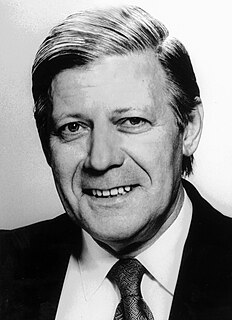 W
WHelmut Heinrich Waldemar Schmidt was a German politician and member of the Social Democratic Party of Germany (SPD), who served as Chancellor of the Federal Republic of Germany from 1974 to 1982.
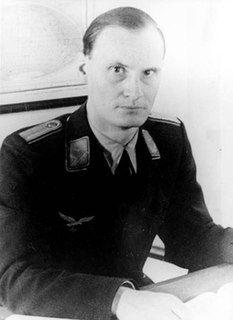 W
WHeinz Harro Max Wilhelm Georg Schulze-Boysen was a left-wing German publicist and Luftwaffe officer during World War II. Schulze-Boysen became a leading German resistance fighter as a member of a Berlin anti-fascist resistance group that was later called the Red Orchestra by the Abwehr. He was arrested and executed in 1942.
 W
WGerhard Schürer was a leading politician in East Germany.
 W
WThe Cologne school massacre was a mass murder that occurred at the Catholic elementary school located in the suburb of Volkhoven in Cologne, West Germany on 11 June 1964. The perpetrator, Walter Seifert, also known as "Der Feuerteufel von Volkhoven", attacked the people at the school with a home-made flamethrower and a spear, killing eight pupils and two teachers, and wounding twenty-two others. When police arrived at the scene, he fled from the school compound and poisoned himself. He was taken to a hospital, where he died the same evening.
 W
WHeinz Sielmann was a wildlife photographer, biologist, zoologist and documentary filmmaker.
 W
WBernhard Carl "Bert" Trautmann EK OBE BVO was a German professional footballer who played as a goalkeeper for Manchester City from 1949 to 1964.
 W
WFreiherr Horst Julius Treusch von Buttlar-Brandenfels was a German general. Freiherr, which equals "Baron", was his title of nobility.
 W
WJosef "Seppl" Veltjens was a German World War I fighter ace credited with 35 victories. In later years, he served as an international arms dealer, as well as a personal emissary from Hermann Göring to Benito Mussolini. He was awarded Pour le Mérite, the Royal House Order of Hohenzollern, and the Iron Cross.